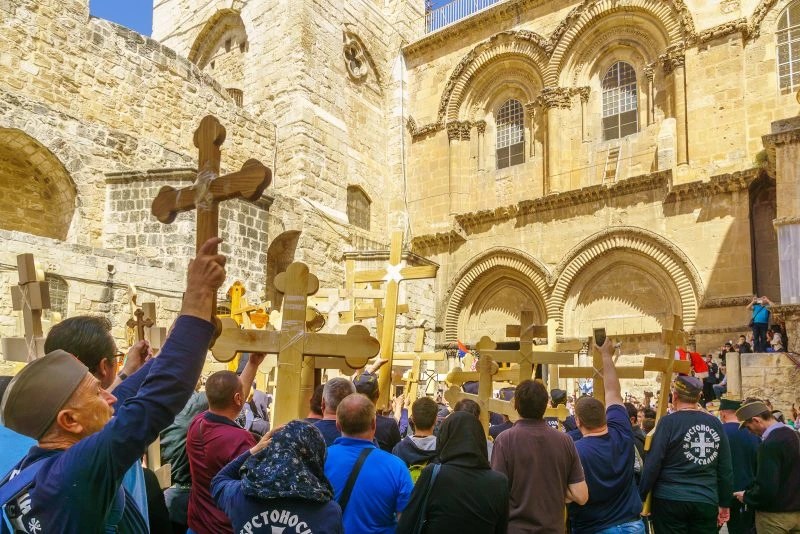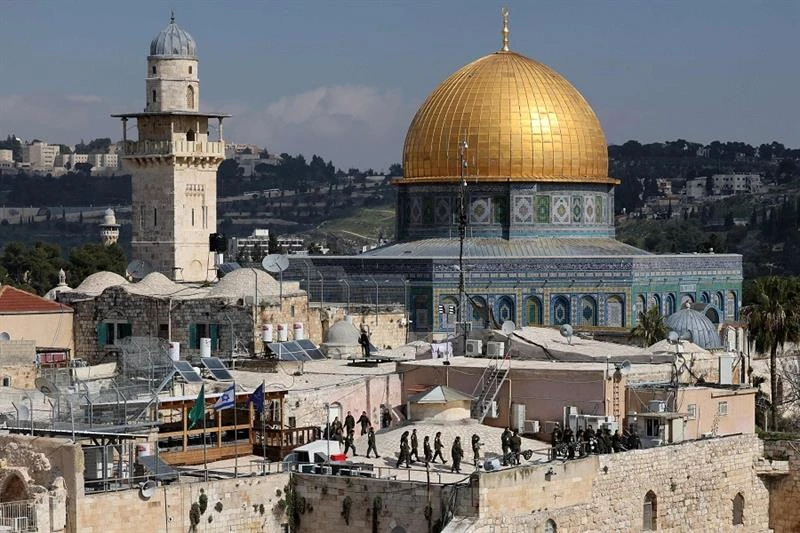Nazareth is one of the most important cities in the world for the Christians in northern Israel, with deep biblical history and spiritual importance. Often called the "Holy City of Nazareth," it is the very place where Jesus Christ spent even much of his childhood. This city is home to some of the most sacred Christian sites, including the Basilica of the Annunciation, where the angel Gabriel is considered to have appeared to the Virgin Mary and told her she would bear the Son of God. Nazareth cannot be seen without an experience, either spiritual or cultural. A Holy Land day tour offers the perfect opportunity to experience Nazareth along with other key biblical sites in the region, enhancing the spiritual journey and cultural discovery. Whether for spiritual reflection or cultural exploration, Nazareth offers a unique experience for all who visit.
The Historical Significance of Nazareth in Christianity
The place of great historical importance for Christianity is the hometown of Jesus Christ, Nazareth, wherein he had spent his early years. The specific thing about Nazareth is that according to the New Testament account, the Annunciation took place here, when for the first time, the Angel Gabriel said to Mary, who was still a virgin, that she was to conceive the Son of God. This event is probably one cornerstone event on which Christian belief stands; the existing Basilica of the Annunciation marks the spot where this divine message was delivered. It is the place where Jesus grew up, where he worked as a carpenter, and where he began his ministry. It represents humility in Christianity and the revelation of the divine—the small town of Nazareth is presented in the Gospels as such an inconspicuous location on Earth where God chose to manifest his precious presence. From then on, Nazareth became a site of pilgrimage for millions of Christians, forever connecting the believer with the life and teachings of Jesus on his or her own terms. Over time, it has really developed into a symbol-state of intersection of faith, of history, and of divine purpose in the Christian faith.
Key Religious Sites in Nazareth: A Pilgrim's Guide
Basilica of the Annunciation
Very clearly the most important religious venue in Nazareth, the Basilica of the Annunciation stands over the place where, it is reverently believed, the angel Gabriel revealed to the Virgin Mary that she would give birth to the Son of God. Mimicking its fantastic new architecture and beautiful mosaics depicting the Virgin Mary in various cultures worldwide, this basilica is a pilgrimage hub.
St. Joseph's Church
This church, located just next to the Basilica of the Annunciation, was built over the site where the traditional belief states that Mary's and Joseph's home once stood. This temple raised over Joseph, whom the world knew as the earthly father of Jesus, is a place of prayer and reflection on his part in the Holy Family.
The Synagogue Church
This is traditionally thought to be the site of the synagogue where Jesus taught in his own home of Nazareth. This church quite appropriately marks the place according to the Gospel of Luke where Jesus reads from the scroll of Isaiah, declaring that he fulfills the prophecy. This is an important pilgrimage stop for those wishing to meditate on the earlier ministry of Jesus.
The Mary's Well
Mary's Well is the old spring in the city of Nazareth, said to have been used as a water source by Mary. This well has become the site of devotion for centuries so that visitors can really contemplate the everyday life of Jesus and His family, living in humble surroundings. Today, the area is a very quiet place for reflection and prayer.
Nazareth Village
This reconstruction depicts the open-air museum, which is not a church but represents life in 1st-century Nazareth. It transports one to time and offers a unique experience of the time in which Jesus was raised. The vintage village features houses, workshops, agricultural practices, and other things that tell a story about life in this era, giving valuable glimpses of understanding into the historical and cultural contexts of life for Jesus.
The Church of the Mensa Christi
This church has been built over a site where, according to tradition, Jesus revealed himself to his disciples after the resurrection and while sharing a meal with them. The Church of the Mensa Christi celebrates here this momentous event as a point of the Christian tradition in which Jesus restored to his disciples the faith in him.
Mount Tabor (near Nazareth)
Mount Tabor is located just outside Nazareth, and it is the place for the Transfiguration of Jesus. This mountain is not within Nazareth itself, but it is a very important pilgrimage site for all who come to this area. It is there that Jesus was transfigured before the eyes of Peter, James, and John, revealing the divine nature.
Nazareth's Vibrant Markets and Local Culture
Nazareth Old Market (Souq): A Highlight of Culture
To many, the Old Market (Souq) is a perceptual reference to a vibrant cityscape full of artisans, shopkeepers, and vendors peddling an endless variety of goods. All the stalls are full of bright colors, and the items are very even more works of art: jewelry, textiles, spices, olive wood carvings, and fine religious artifacts. The Souq gives an insight into how life was for Nazareth's inhabitants then and today, presenting opportunities for tourists to shop for original mementos that speak for the place.
Authentic Local Cuisine
Another form of the cultural heritage is many kinds of real traditional dishes that are available from generation to generation and reflected by Nazareth cuisine. One can find all sorts of sweet-tooth temptations, mainly knafeh (sweet pastry), hummus, falafel, shawarma, and labneh (strained yogurt). Thus, it is easy to enjoy the tasty Middle Eastern foods with the fine dining in this historic city at some of the many restaurants and cafes serving good food.
Traditional Crafts and Artistic Products
Nazareth is famed for its handiwork: one will find a multitude of products hand-produced, reflecting the culture and religious history of the city. Olive wood carving, religious icons, and textiles being woven by hand are the most prominent of traditional products found in the marketplace. They are beautiful but are intended as their memory of local traditions and of the actual community with its spiritual heritage.
Festivals and cultural Events
There is much to celebrate at Nazareth in terms of culture throughout the year. Christmas in Nazareth is one of the many activities that attract many thousands to the town for an unforgettable Christmas holiday experience. The streets are transformed with Christmas lights, hundreds of performances, religious events, and, of course, transform the magical festive spirit that one enjoys from the event, especially in such a place as this. Nazareth also celebrates the Feast of Annunciation, which has a variety of processions and activities to mark the occasion that is very much regarded in Christianity.
Art Galleries and Museums
Not only does Nazareth possess a rich art harbor, but there are also midlands registries of galleries for local and regional artists. Museums housed in the city represent the area"s history and heritage and mostly present public exhibition spaces whose exhibits tease out as many cultural and religious roots as possible. They are thus able to lift a corner of the curtain and offer visitors a peek into the much richer history of the community and what Nazareth has done to shape the cultural landscape within the land of the Holy.
Nazareth is a city with historical, spiritual, and cultural influences, and this city would certainly provide a visitor with reflective experiences and enjoyments, enriched by its sacred places, markets, and local traditions. You may as well be walking on the ground that the baby Jesus walked or free soaking up local life through food, art, and community—all that within the same city that strikes a harmonious balance between the modern and ancient. For those looking for something quite more meaningful in their spiritual odyssey, Nazareth does have special holy land packages that combine visits to important religious sites with a private guided tour, intimate prayer time, and participation in traditional rituals for key religious holidays.






-webp.webp)


